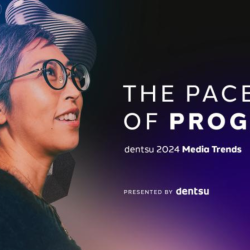In the 18 months since generative AI has been widely available, B2B marketers have faced questions about what role it can play in our jobs. The upsides are exciting. The hyper-fast speeds at which generative AI can quickly analyse data, streamline workflows, summarise documents, and assist with research are amazing. So are its blazingly fast capabilities to produce copy, images, videos and music — all from written or spoken prompts. But many are concerned about how safe it is to use. In fact, McKinsey reports that 59% of marketers worry about the quality of AI-generated materials (meanwhile, only 32% of businesses have taken steps to mitigate AI inaccuracy).
Talkin’ ‘bout my g-g-generation
Such concern is not misplaced. Generative AI tools can ingest data from billions of web pages in more than 100 languages, process it, and produce new content. But here’s the catch: billions of web pages are not accurate, and generative AI tools cannot ascertain which information among them is correct (and therefore can be repurposed) and which data is misleading or wrong (and should not be used). That means outputs could repeat content that’s misleading or flat-out wrong.
They can also misrepresent your company’s brand values or associate you with inappropriate comments. It happens more often than you might think, and ironically tech businesses like Meta and Bing are among those to have been caught out — the former when an AI-supported chatbot for Facebook fabricated sexual harassment allegations about elected officials in New York state; Bing with an AI add-on that said Meta’s quarterly revenue had risen, when it had actually fallen. Even if you manage to avoid that pitfall, there’s the far more widespread issue that, without supervision, written content produced by generative AI is likely to be trite and uninspiring. At the same time, search engines are now dumping obviously generic content from results and refining their algorithms to promote unique, meaningful copy. Boring people with AI-authored articles isn’t a crime — but it can seriously hurt your SEO.
Giving away the family secrets
Your IT team has devoted endless time and money to ensure that your business’s trade secrets are safe from hackers; your legal team has drawn up iron-clad contracts to stop departing employees from taking them to their new workplace along with that half-dead Swiss cheese plant; only for someone on the marketing team to blithely paste them into an open-source AI tool, along with a prompt to ‘write a press release about our top-secret new product launch.’
That means your IP and sensitive information can end up becoming part of the tool’s training — learned and repurposed as part of future output for anyone else using it. Prompts that include product features, tech specs, customer requirements, company objectives or anything sensitive or proprietary could become part of the source material for any future user — meaning your information could be inadvertently revealed in new content generated by AI.
The Wild West of AI law
A final danger lies in the fact that while AI can probably explain copyright law in Azerbaijan, Zambia and everywhere in between, it doesn’t necessarily understand or obey these laws. AI, copyright and the law are a hot mess of regional regulations, and industry standards struggling to keep up with the rapid pace of change. So it’s hard to even know who owns the rights to creative output or whether copyright laws have been broken in training AI tools, let alone what happens if it produces something a bit too similar to someone else’s proprietary content.
So does that mean you should never use generative AI? Not at all — these concerns shouldn’t stop you. Generative AI is here to stay; the more you know, the better.
Steps to leverage the benefits
Start by initiating discussions within your company and agree on how you will use generative AI. Evaluate your processes for tasks that can be automated or augmented with tools. Find the repetitive, mundane tasks and common roadblocks; often, these can be improved with AI. Consider generative AI as a jump-start tool allowing you to dedicate more time to improving the work. From there, review the potential of the generative AI tools you’re interested in and develop business cases for them.
Focus on what each tool is best at and safely experiment with their free versions before paying. Once implemented, monitor how they’re being used and adjust accordingly. People will find surprising uses, sparking ideas and driving innovation.
That said, we’d encourage B2B marketers to ban the use of generative AI for final work. As great as they are as sounding boards and thought starters, they’re quite simply not better than humans when it comes to creating content that has an emotional impact on audiences.
The key to maintaining control of your messaging and creative processes lies in human insight. No generative AI work should be released without a meticulous review by a real, live person. Generative AI will not protect and promote your company’s brand; that’s not what it’s programmed to do. But you and your team can.
Featured image: Rolf van Root / Unsplash


































